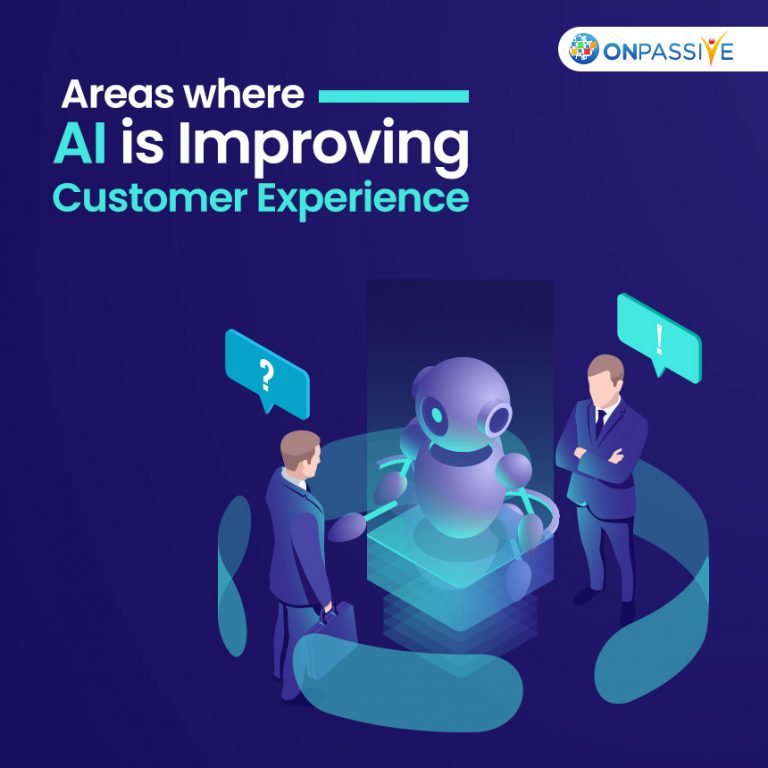
AI is one of the significant developments in technology. Artificial Intelligence continues to advance and has developed to be an essential tool for delivering exceptional customer experience.
The handiness of AI-enhanced customer relationship management (CRM) and customer data platform (CDP) software has introduced AI to businesses.
Artificial Intelligence Simplifies understanding a Customer.
AI and machine learning for examining social, and behavioural statistics allow brands to increase their understanding of their customers. This lets brands collect highly significant information about their customers.
It is believed that Artificial Intelligence will have a substantial impact on customer buying decisions in the retail industry.
According to Gartner, by 2023, 30% of customer service organizations will deliver proactive customer services using AI-enabled process orchestration and continuous Intelligence.
How AI is Improving Customer Experience
Customer Preference
To understand a customer, it is necessary to have Knowledge about the motivation, expectation and need that drive their purchasing decision. However, it is also a fact that customer needs and preferences are complex and continually changing.
Prediction of this complex and evolving nature in real-time will allow a business to figure out the marketing mix of every individual customer.
Augmented, predictive analytics, leveraging Artificial Intelligence, customizes this marketing mix and reduces the friction that customer faces while making a purchase. Overall, it will improve the customer experience and accelerate sales velocity.
Customer Touch-points
Customer touch-point is any interaction between a brand and its customer (or potential customer) at any point of time – before, during or after the purchase. These interactions can occur at various online platforms, including mobile apps, social media, websites and offline mode.
Based on the customer interaction with the brand on these trackable channels, AI gathers information and aggregates them to generate a data-set. Machine Learning (ML) algorithm uses this data-set to learn customer actions on the digital touch-points repeatedly.
Learning these actions allow a business to anticipate which touch-point is more valuable from a customer point of view, and which one is not. Knowledge about the touch-point pattern will help an enterprise identify the customer touch-points, which are more effective and need improvement.
Customer Experience Enhancements
Customer segmentation has become more comfortable with the adoption of AI and ML-based technology. Evaluating customer experience at each step will allow a business to manage and improve each customer touch-point experience. This is known as Customer Experience Enhancement.
With the assistance by AI, online retailers can identify various Customer Experience Enhancements on their social media platforms, websites, mobile apps, and customer care systems that are more likely to convert potential customers into customers.
Enhanced Communication
One of the best ways to improve customer experience is by resolving the issues or problems that the customer is facing. But, there will see hundreds of thousands of customers contacting the company to register their complaints, queries or to express their experience regarding the service.
Responding to all the messages in the real-time is unrealistic and almost impossible.
AI-based Chatbots allows the company to increase its user response rate by being available 24/7. It saves time and money, and also provides better customer satisfaction by delivering near human-like conversational experience.
Providing real-time resolution to queries, concerns, issues, and complaints helps create and increase the brand’s credibility among the customers.
Amazon’s Alexa, Facebook messenger and Google Assistance are some of the most popular chatbot technology examples.
Customer Behavior Pattern
The more a business understands its customer, the better are its chances to grow. AI-powered analytics and ML identifies the pattern in customer behaviour which can be used to provide a personalized experience to each customer.
It learns from the previous actions of the customers, their preferences, past purchases and provides recommendations accordingly. Understanding the patterns allows the retailers to predict the current needs and future demands of the customers and also identify the potential customers.
A good example of AI-powered personalization is Spotify’s tailored playlists based on a customer’s listening habits.
Customers are the backbone of any organization. Understanding the needs of the customers and acting according to it is the key to customer satisfaction. AI has a significant role in the success stories of many businesses around the globe.
The credit for Netflix and Starbucks’ success is attributed to AI’s ability to predict and personalize certain aspects. Its ability to predict accurate behaviour of the customers is making it a favorite tool among the businesses.
Leveraging AI not only allows businesses to make accurate real-time predictions but also helps to understand future trends in the market.


